William F. Lamb designed the Empire State Building — here is the incredible story
William F. Lamb was born in Brooklyn in an era of monumental architecture in NYC. His vision for the Empire State Building, the world's tallest skyscraper for 40 years, made it also the most famous building in the world.
The Empire State Building has been surpassed by many skyscrapers in height but stands above all others in public imagination.
The masterpiece American landmark was the brainchild of Alfred E. Smith, the former governor of New York and a three-time presidential candidate.
Financing was led by John Jakob Raskob, a former General Motors executive, devout capitalist and chairman at the time of the Democratic National Party.
Starrett Brothers & Eken was the general contractor. Thousands of construction workers and tradesman did the hard labor. Five of them died on the job.
One man designed this breathtaking monument to American exceptionalism.
His name is William F. Lamb.

William F. Lamb was the chief architect of the Empire State Building. "I sketched the design of the Empire State Buidling in just two weeks," Lamb wrote. "The construction was completed a year and six months from the starting of the drawings." (Courtesy Empire State Building)
He was the principal architect behind "the most famous building in the world" — visited by four million people each year nearly a century after its completion.
"I sketched the design of the Empire State Building in just two weeks," Lamb wrote, according to several accounts.
Work began on March 17, 1930. Opening ceremonies were held on May 1, 1931.
The towering marvel of engineering and design was built with shocking speed in the early days of the Great Depression.
Work began on March 17, 1930. Opening ceremonies were held on May 1, 1931.
"The construction was completed a year and six months from the starting of the drawings," the architect said.
Lamb was a child of New York City. He studied in Paris. He overcame terrifying adversity — the loss of a leg in a motorcycle accident — that crippled his body but not his genius.
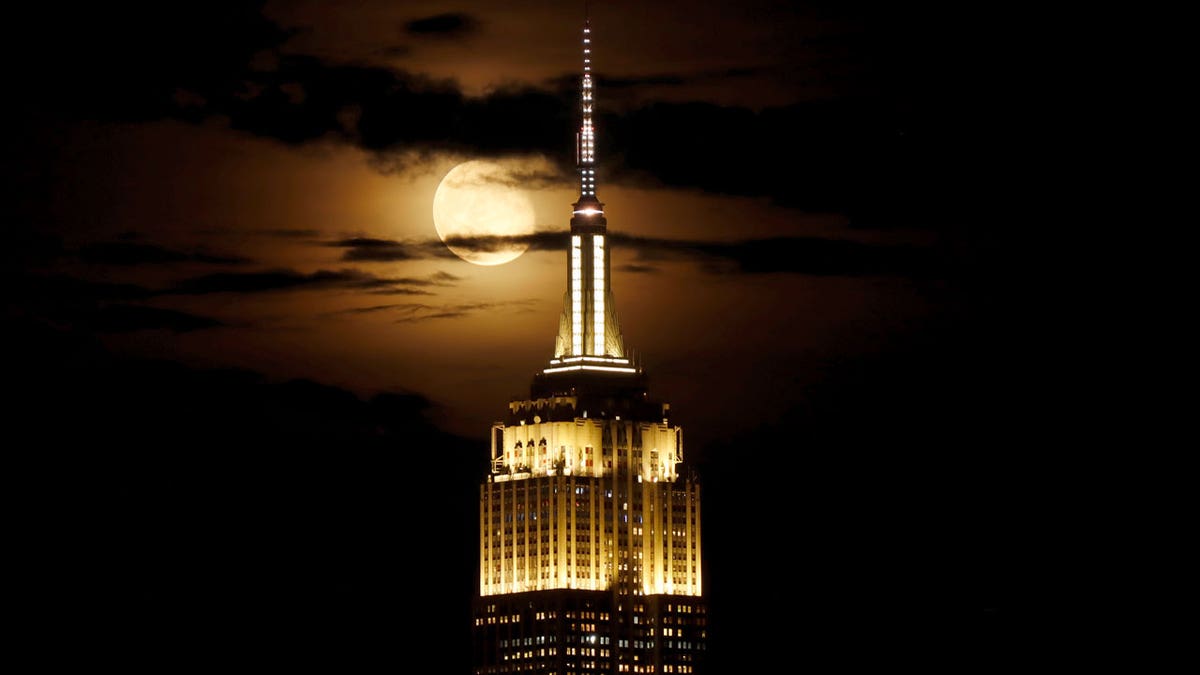
The Empire State Building was named the number-one attraction by the 2022 Trip Advisor travelers’ choice awards. You can book a 90-minute tour at the building with the choice of a premium experience, sunrise tour, a pass for the 86th and 102nd floors, and more. (Gary Hershorn/Getty Images)
"There are now many buildings in many countries, and many in New York City, taller than the Empire State Building," skyscraper expert Carol Willis told Fox News Digital.
TEXAS MOM SUFFERS QUADRUPLE AMPUTATON, CREDITS HER FAITH AND A LITTLE DOG FOR PULLING HER THROUGH
"Yet it remains to this day New York’s signature skyscraper. It’s the opening shot of every movie. It stands as a perpetual symbol of the Manhattan skyline, New York City’s energy and our skyscraper inventiveness."
Willis is the author of the 2007 book "Building the Empire State" and the founder of the Skyscraper Museum in New York City.
There are now 58 buildings around the world, she notes, and six in Manhattan alone, that are taller than the Empire State Building.
"It stands as a perpetual symbol of the Manhattan skyline, New York City’s energy and our skyscraper inventiveness." — Empire State Building expert Carol Willis
It turns out that people love the Grand Old Lady of the New York City skyline for more than just her height.
They love her because she’s beautiful and majestic and, like a favorite song, captures our admiration in ways we can’t truly explain.
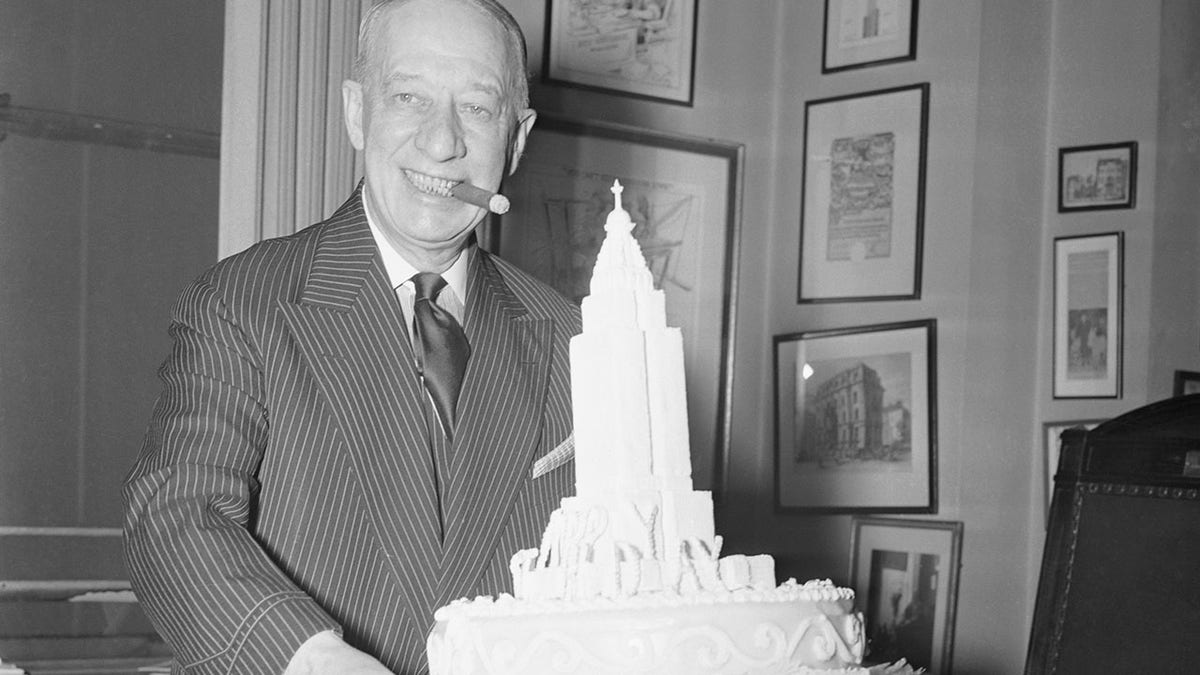
Former governor, and three-time presidential candidate, Alfred E. Smith celebrated his 69th birthday in a press interview at his offices in the Empire State Building. Smith was president of Empire State Inc., which built the Empire State Building. (Getty Images)
"He himself was very simple," said Lamb's wife, Cuthbert Catherine (Dufour), according to an interview years later with the New York City Landmarks Preservation Commission.
"He loved everything classical; he loved classical music, and simple lines."
He was infatuated with Romanesque architecture and the grand cathedrals of Europe — "those old, very strong sturdy churches," as Cuthbert Lamb called them.
Born in monumental times
William Frederick Lamb was born in Brooklyn on Nov. 21, 1883, to William and Mary Louise (Wurster) Lamb.
His father was a native of Glasgow, Scotland. He fought for the Union Army in the Civil War and became a "prominent builder" in the Williamsburg section of Brooklyn, according to a 1903 obituary.

The Brooklyn Bridge opened on May 24, 1883, connecting Brooklyn and Manhattan. It was the longest bridge in the world at the time and a beautiful monument to American ambition. (Kerry J. Byrne/Fox News Digital)
His mother was born in Manhattan but lived most of her life in Brooklyn. Her brother, Lamb's uncle, Frederick W. Wurster, was the last mayor of Brooklyn before it was absorbed by Manhattan into New York City in 1898.
The architect was born into a monumental era in New York City history.
"She is a global symbol of risks taken and dreams fulfilled." — Anthony Malkin, Empire State Realty Trust chairman
New York City welcomed the Brooklyn Bridge in May 1883, six months before it welcomed Lamb.
The completion of the landmark bridge played a significant role in the consolidation of New York City 15 years later.
Lamb was only five when the Statue of Liberty was unveiled in New York Harbor.
It was an era when New York City, and the United States at large, were stepping out onto the world stage in ways that great societies have since the dawn of mankind — with monumental feats of architecture and engineering.
MEET THE AMERICAN WHO FIRST RECORDED THE BLUES, NATION'S ORIGINAL POP DIVA MAMIE SMITH
He studied at Williams College in Massachusetts and the School of Architecture at Columbia University in Manhattan before earning a diploma from the prestigious Ecole des Beaux-Arts in Paris.
Success in France, however, was marred by a near-death experience.
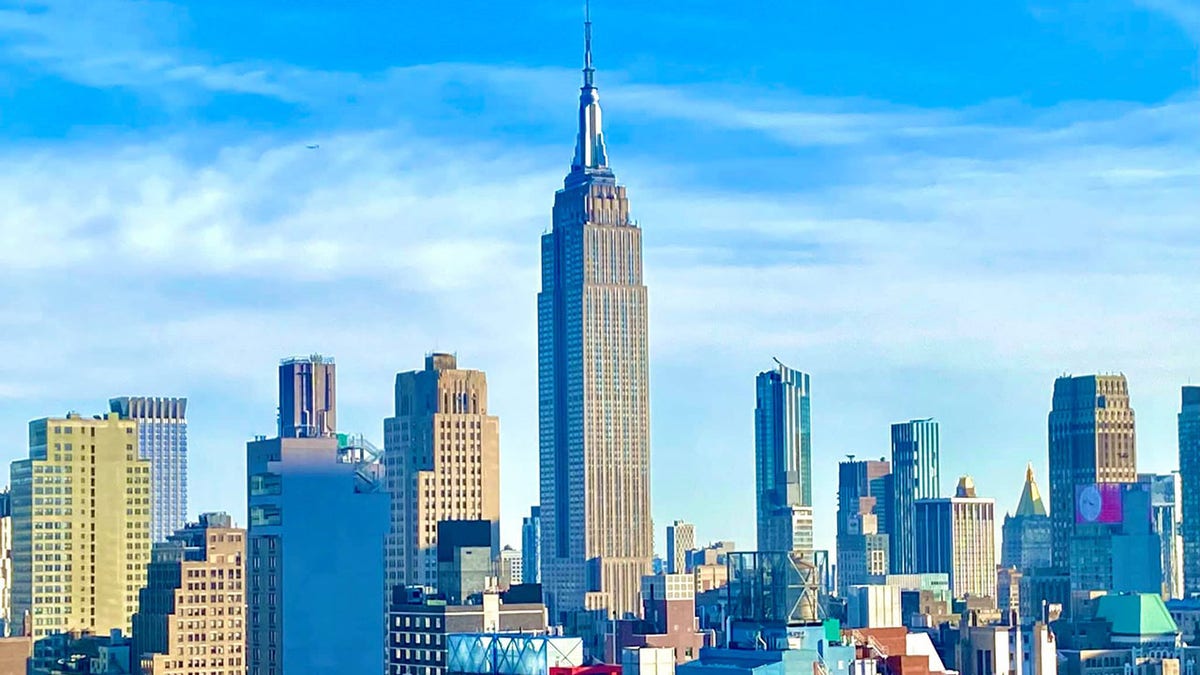
The Empire State Building, as seen from the 42nd floor of a residential building on 42nd Street, standing singularly over the Midtown Manhattan skyline. (Kerry J. Byrne/Fox News Digital)
"He had lost a leg in a motorcycle crash in Europe and wore a prosthesis that caused him to limp noticeably," Mark Kingwell writes in his 2006 book "Nearest Thing to Heaven: The Empire State Building and American Dreams."
He returned to New York City and became a partner in the firm of Shreve & Lamb, soon to be renamed Shreve, Lamb & Harmon, in the 1920s.
"He lost a leg in a motorcycle crash in Europe and wore a prosthesis that caused him to limp noticeably." — Author Mark Kingwell
He built his reputation designing many of New York City’s early landmark skyscrapers, including the Standard Oil Building and the General Motors Building.
He also designed the Reynolds Building for R.J. Reynolds Tobacco Co. in Winston-Salem, North Carolina, cited by some as a stylistic precursor of the Empire State Building.
The firm was tabbed to build the Empire State Building in October 1929 — the same month the stock-market crash launched the United States, and much of the world, into the Great Depression.

The Reynolds Building in Winston-Salem, North Carolina, was designed by Empire State Building architect William F. Lamb. It's considered a precursor of the famous New York City skyscraper. (Andrew Harrer/Bloomberg via Getty Images)
Raskob, the financier behind the project, rose from poverty to become a devotee of American exceptionalism. He leaned on his wealthy friends to double down on their faith in capitalism and put their money in the new building despite the fearful economy.
He asked Lamb to manifest that faith in steel, limestone, granite and glass.
Writes Kingwell, "Popular legend has it that, after the firm was hired, Raskob … called Lamb into his office, held an HB pencil rubber-end on his desk and said, ‘Bill, how high can you make it so that it won’t fall down?"
'Appeal is enormously palpable'
Raskob’s question was answered after just 13 months of construction.
The Empire State Building stands 102 stories and 1,250 feet tall — 1,454 feet high with its gleaming antenna, an addition opposed by the architect.
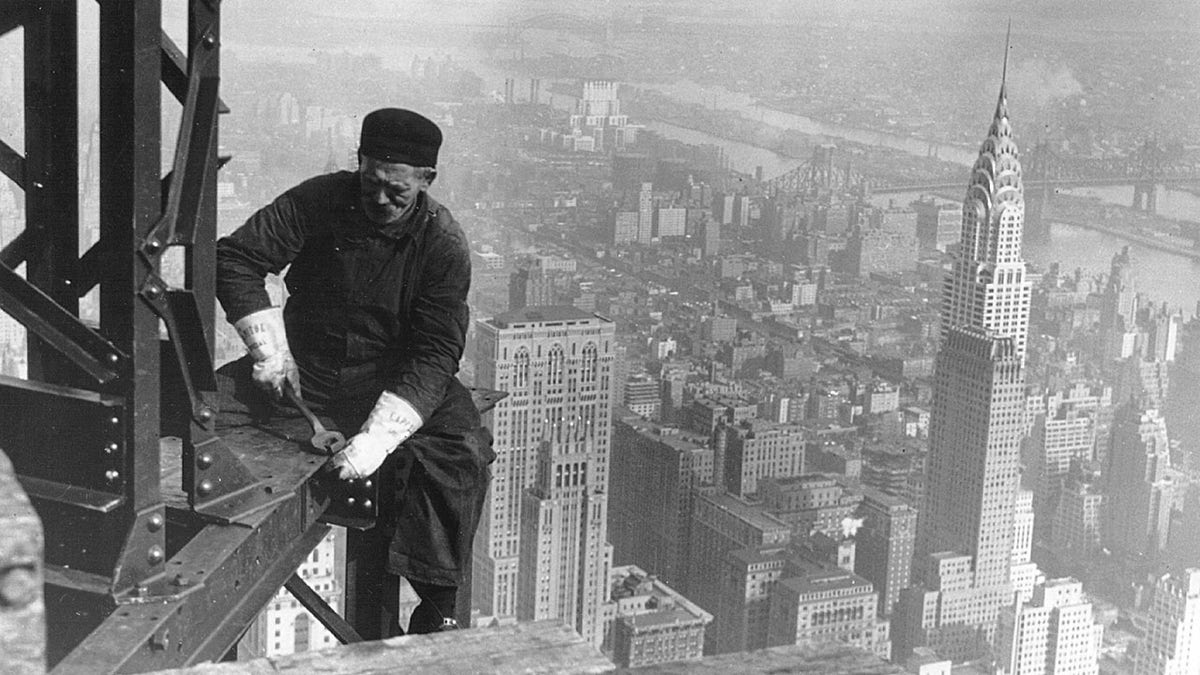
A construction worker bolts beams during construction of the Empire State Building, New York City, circa 1930. In the background (right) is the Chrysler Building. (Lewis Hine/National Archive/Newsmakers)
The sheer scope of the construction remains hard to believe: 10 million bricks, 200,000 cubic feet of Indiana limestone, 6,400 windows and 37 million cubic feet of space, according to "The Empire State Building: The Making of a Landmark" by John Tauranac.
The building was an instant sensation in the eyes of popular culture.
MEET THE AMERICAN WHO INVENTED SLICED BREAD: OTTO ROHWEDDER, HARD-LUCK HAWKEYE
"The appeal to the layman is enormously palpable," New Yorker magazine wrote.
It even added a couplet: "The Empire State's/Ambitious mass/Is, take it from/The critics class."
Few described the edifice more poetically than Lamb himself: "Empire State seemed almost to float, like an enchanted fairy tower, over New York," he wrote.
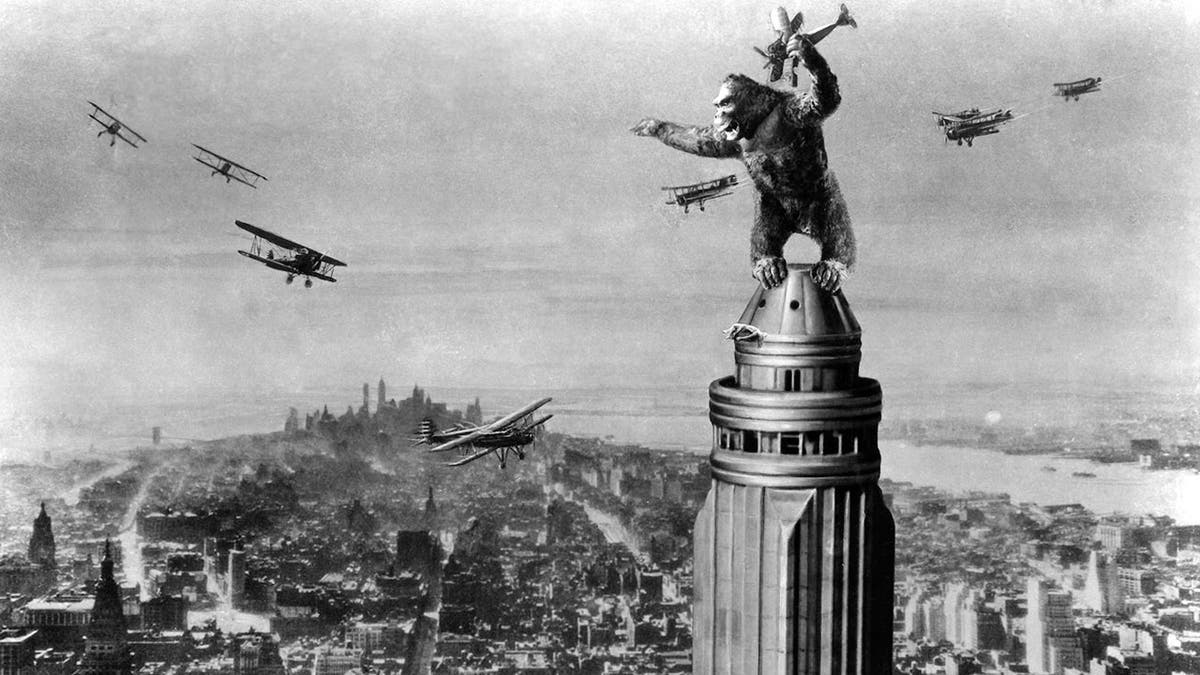
The giant ape fights off planes atop the Empire State Building in New York City at the end of the film "King Kong," 1933. (Silver Screen Collection/Getty Images)
It soon became a Hollywood darling. The Empire State Building was only two years old when it played a starring role in the 1933 production of "King Kong."
It's starred in dozens of movies since while serving as stage-setting New York City backdrop for countless other silver-screen productions.
"The appeal to the layman is enormously palpable." — New Yorker magazine, 1932
Lamb's design proved its structural integrity during a deadly incident at the end of World War II.
It was struck by a U.S. Army Air Forces B-25 bomber on a fog-bound morning on July 28, 1945.
Eleven people were killed in the building and on the ground from falling debris, plus the three crew members.
Empire State suffered only superficial wounds that were quickly repaired.
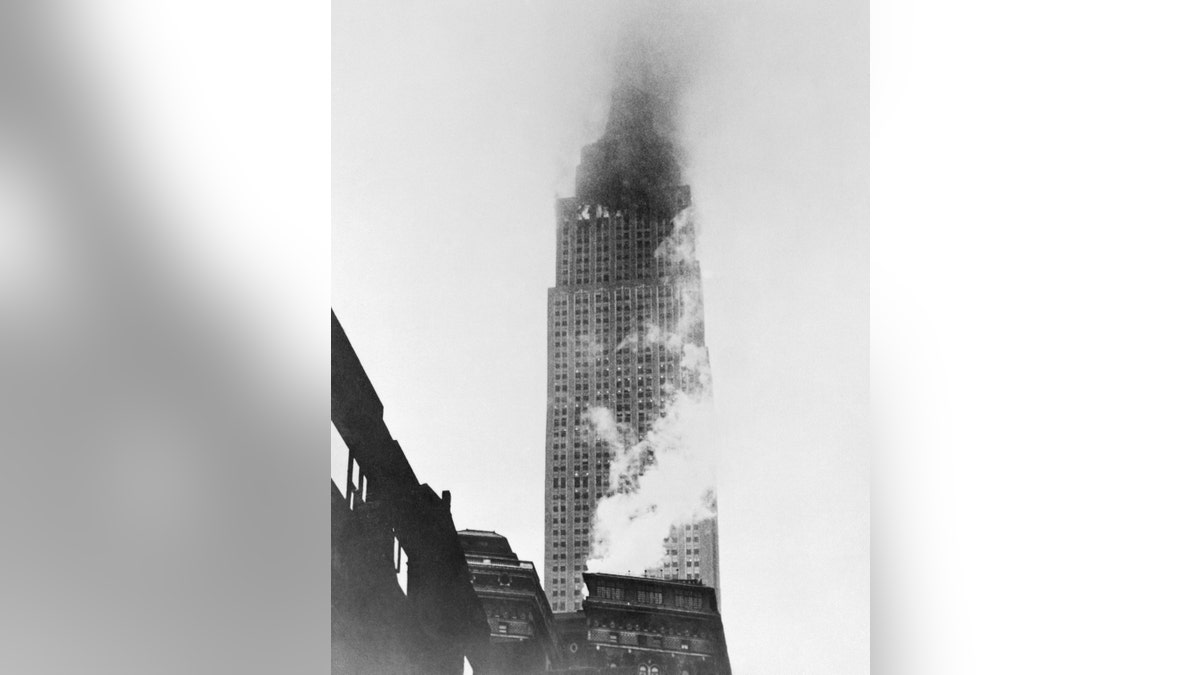
A striking view of the giant Empire State Building with its upper stories enveloped in smoke and flame after it was rammed by a U.S. Army B-25 bomber. (Getty Images)
It was the tallest building on the planet from its completion in 1931 until 1971 when surpassed by the World Trade Center Towers; it was again the tallest building in NYC from 2001 to 2012.
"The Empire State Building, the ‘World’s Most Famous Building,’ belongs to the world," Empire State Realty Trust chairman Anthony Malkin told Fox News Digital.
"She is a global symbol of risks taken and dreams fulfilled … She lives in the hearts and imaginations of all peoples, cultures, and ages, as cutting edge today as the day she opened."
‘Isn’t this marvelous?'
William F. Lamb died on Sept. 8, 1952. He was 68 years old.
He’s buried today in Kensico Cemetery in Valhalla, New York.
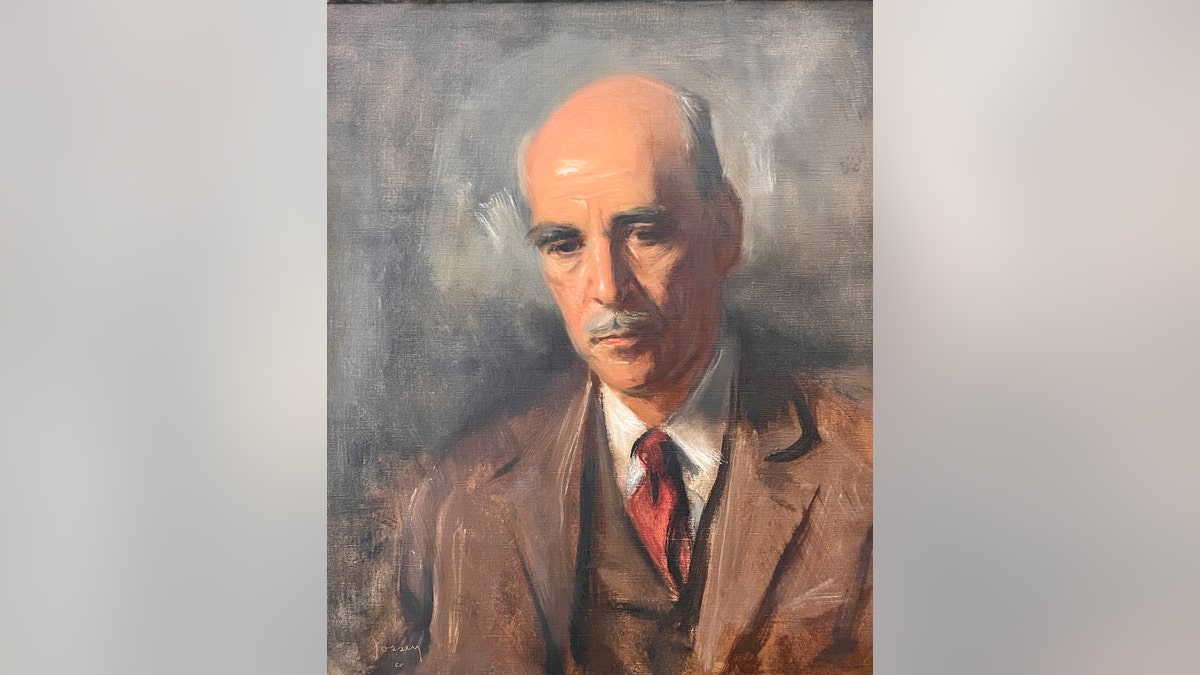
Portrait of architect William F. Lamb (1883-1952), best known for designing the Empire State Building in Manhattan. (National Academy of Design, New York/Bridgeman Images)
The Empire State Building was an immediate personal triumph. Lamb earned the Architectural League’s Medal of Honor in 1931.
The American Society of Civil Engineers named it one of the seven greatest engineering achievements in the nation’s history in 1955.
CLICK HERE TO SIGN UP FOR OUR LIFESTYLE NEWSLETTER
The Empire State Building was just 55 years old when it was proclaimed a National Historic Landmark by the National Park Service.
Today, it is only the seventh-tallest building in New York City, following a recent historic spate of high-rise construction in Manhattan.

The sun rises behind the Empire State Building in New York City as a person walks on a pier in the Hudson River on March 10, 2023, in Hoboken, New Jersey. (Gary Hershorn/Getty Images)
But it is easily still the most famous skyscraper in New York, and around the world.
An average of 11,000 tourists visit the Empire State Building every day.
Lamb’s design remains the most beautiful skyscraper in the world in eyes of many people, nearly 100 years later.
CLICK HERE TO GET THE FOX NEWS APP
Lamb eschewed the spotlight to the point that many architects are much better known despite much lesser works.
There is, as skyscraper expert Willis noted, no biography of Lamb.
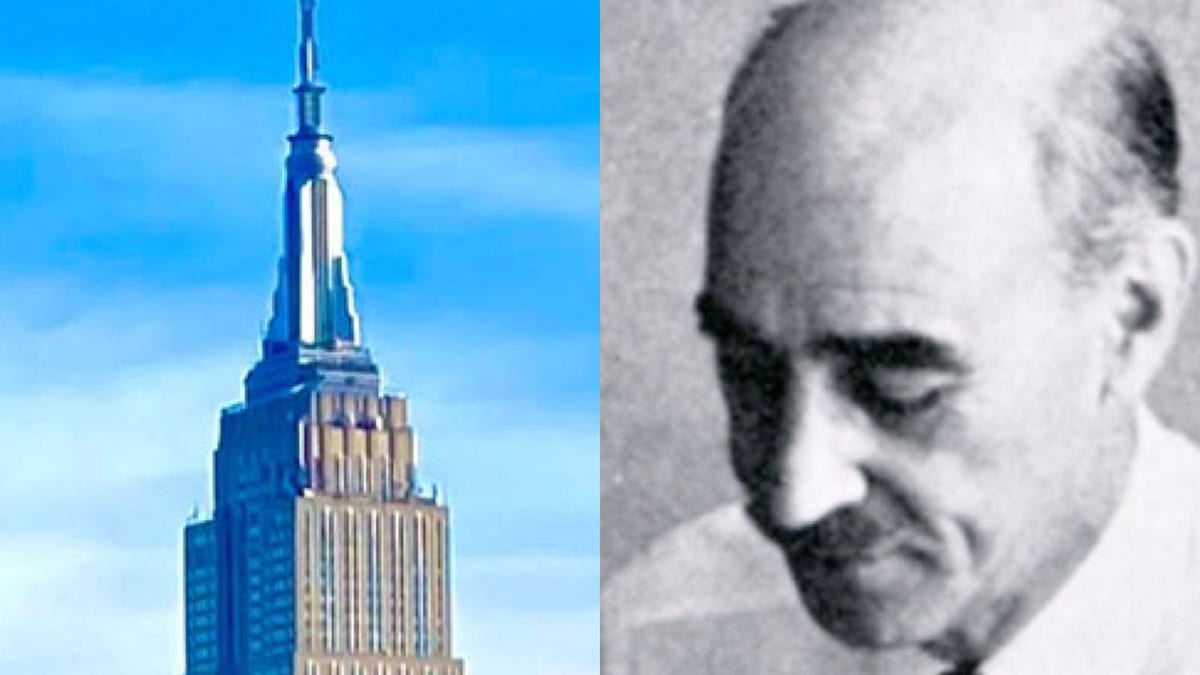
The Empire State Building and its architect, William F. Lamb, a native New Yorker. (Fox News Digital/Empire State Building)
He skipped the opening ceremonies of his masterpiece of design on May 1, 1931, to set sail for Europe.
Writes Kingwell, "Three miles out, and so past the Prohibition boundary, he poured two martinis from a chrome shaker, pointed at the building visible in the distance, and said to his wife, ‘Isn’t this marvelous? Here we are and we don’t have to go the party and listen to all those speeches.’"
To read more stories in this unique "Meet the American Who…" series from Fox News Digital, click here.









































